We sincerely hope that you will enjoy this article about 5 Incredible South American Trees. These wonders of Nature truly form an integral part of the worlds’ ecosystems, to be certain. But, like every other form of life on the planet, these come in seemingly endless varieties.
Many parts of the globe host numerous species of trees, and this part of the globe is no exception to that. Indeed, some of the most amazing trees in found anywhere in the world appear here. These 5 Incredible South American Trees are only just the beginning.
Cannonball Tree
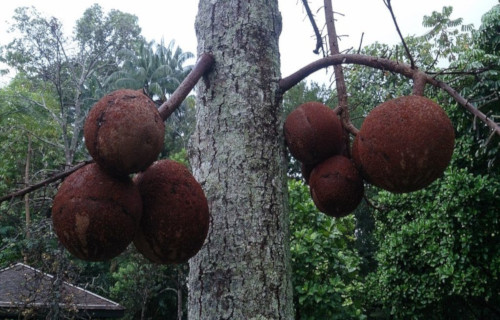
CCL: https://bit.ly/2TUejJB
Cannonball Tree Facts
- Leading off this article about 5 Incredible South American Trees is one that really catches the eye, the remarkable Cannonball Tree.
- Quite amazingly, the attention-grabbing term perfectly serves as the common name for the Couroupita guianensis. This awesome tree quite clearly represents a highly distinctive tree native to only a specific portion of the world.
- This remarkable and fascinating species, however, now exists in cultivation in many regions of the world possessing an appropriate climate. While its fruit remains completely edible, humans rarely eat the surprising plant, though.
- That’s due to the fact that, despite the quite fragrant appeal of its flowers, many consider the fruit itself to have a distinctly unpleasant aroma. But the enormous fruit of the remarkable tree does have commercial value of a sort.
- That’s because, and somewhat surprisingly so, many local inhabitants of its region actually feed it to their livestock. The marvelous Cannonball Tree nevertheless has long held a role of importance in the cultures of local Indigenous Peoples.
- These local inhabitants have also long used it as a source of medicines for a wide variety of complaints. These include treating such conditions as skin conditions, injuries, malaria, and even toothaches and the common cold.
- In many countries, though, it now forms an popular ornamental plant. This only increases concerns for it. Fortunately for those who appreciate the wonders of Nature, this tree appears to be maintaining a stable population, for the moment.
- The IUCN, therefore, currently lists it as Least Concern on its Red List. It nevertheless does face threats to its continued existence. Most currently, it faces the danger of habitat loss. Plus, the tree also faces the ongoing threat of climate change.
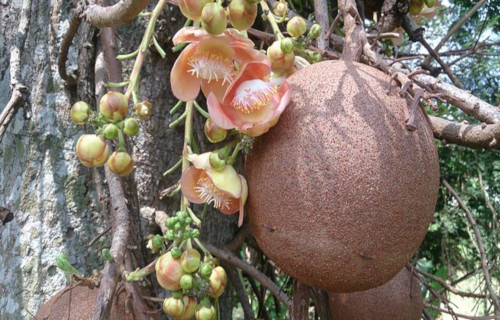
CCL: https://bit.ly/2zyU78k
Cannonball Tree Physical Description
In addition to its other unique characteristics, the truly fascinating Cannonball Tree also constitutes a reasonably large variety of tree. That’s due to the fact that this particular species of plant typically attains heights equaling around 110 ft (35 m).
The majority of specimens growing outside of its native region, however, most commonly average slightly less in height. Its other features more than make up for this in terms of appeal, though. For one, its leaves generally develop in comparatively large clusters.
These groupings develop on the end of short branches. These branches typically grow to a length measuring between 3 – 12 in (8 – 31 cm) in length. But, these can grow to as long as 22 in (57 cm) in overall length. The flowers produced also have an extremely strong aroma.
Yet, for all their glory, these aren’t its most wonderful feature. In fact, its astonishing fruit remains the feature for which the fabulous Cannonball Tree is best known. That holds true due to the existence of the amazing physical nature of these.
Firstly, this impressive fruit attains an average mature size of roughly 10 in (25 cm) in diameter. This, understandably, serves as the source of the common name of he tree. Secondly, just one of these astounding fruits may hold as many as 550 seeds.
- Kingdom: Plantae
- Phylum: Angiosperm
- Class: Eudicots
- Order: Ericales
- Family: Lecythidaceae
- Genus: Couroupita
- Species: C. guianensis
Cannonball Tree Distribution, Habitat, and Ecology
The amazing Cannonball Tree evolved as native to a region already well known for supporting a rich diversity of flora. In point of fact, this amazing tree evolved as endemic to the region consisting of portions of Central America and South America.
Understandably, it thrives in a tropical climate, sharing its habitat with related species, such as the Brazil nut. It also shares some traits with other types of local flora. The tree achieves its pollination via the activities of various species of bee endemic to its region.
These include such varieties as bumblebees, wasps, and flower flies, to name a few. However, carpenter bees appear to be a primary pollinator of this truly remarkable tree. All this action occurs despite the fact that the tree produces no nectar.
The fascinating Cannonball Tree also remains entirely dependent upon local wildlife for its propagation. In point of fact, these become dispersed by different animals that feed on the fruits of the plant. It has no other means of maintaining its numbers.
When these seeds fall to the ground, the tough outer shell breaks open. This then, obviously, reveals the fruit within. Animals such as domestic pigs and chickens, among others, consume the fruit voraciously. Consequently, these later spread the seeds via droppings.
Monkey Puzzle Tree
Monkey Puzzle Tree Facts
- Next up in this listing of 5 Incredible South American Trees is the amazing species known as the Monkey Puzzle Tree.
- The eye-catching term for this awesome tree serves as the colloquial name for the Araucaria araucana. And in many ways, the name fits perfectly. This plant species also remains an ancient one that often gets called a living fossil.
- The completely unique name for the tree also originated in the year 1850. This occurred when someone observed that it would puzzle a monkey to climb it. How that person came up with such a humorous description is just incredible.
- But, very sadly, this tree remains very rare in the wild. Though it develops as a hardy and resilient variety, its numbers inexplicably seem to be dwindling rapidly in nature. It now forms a popular garden species in some regions.
Monkey Puzzle Tree Physical Description
The truly remarkable Monkey Puzzle Tree tree represents what experts call a dioecious species. That’s because of the fact that the cones of individual trees typically all form either male or female. This remains a surprisingly common trait among many plants.
Occasional exceptions to this principle nevertheless do sometimes occur. This impressive evergreen also ranks as a moderately large variety. In fact, specimens attain a height of as much as 130 ft (40 m), and the trunks reach 7 ft (2.14 m) in diameter.
The wind further serves as the primary pollinator for this particular species. The seed cones of the Monkey Puzzle Tree reach about 8 in (20 cm) in diameter and disintegrate upon maturity. The seeds released also reach roughly 1.6 in (4 cm) in length.
The leaves of the amazing tree also grow thick and tough. These typically also develop as roughly triangular in overall shape. This remarkable species further evolved as extremely long-lived. Some individuals measure more than 1,000 years old.
- Kingdom: Plantae
- Phylum: Pinophyta
- Class: Pinopsida
- Order: Pinales
- Family: Araucariaceae
- Genus: Auracaria
- Species: A. auracana
Monkey Puzzle Tree Distribution, Habitat, and Ecology
The Monkey Puzzle Tree evolved as endemic only to the lower slopes of the Andes Mountains in portions of Argentina and Chile, in South America. More precisely, within this limited region, the tree generally grows at altitudes above 3,300 ft (1,000 m).
Most fortunately, this species remains comparatively tolerant of diverse soil types in cultivation, compared to other trees. In point of fact, the remarkable variety of tree occurs naturally only in regions of slightly acidic volcanic soil with excellent drainage.
Its extremely unique appearance has further helped to aid in the preservation of the fabulous Monkey Puzzle Tree, albeit unintentionally. That’s due to the fact of this appearance, in addition to being fascinating, also makes it popular in gardens.
The seeds remain edible and highly nutritious for which they get widely harvested in Chile. It also holds a long-standing cultural importance within its native range. That holds true partly because of both its scarcity, and sacred status to members of the local Indigenous Peoples.
Specifically; thanks to the Mapuche Native Americans, it now holds the status of a protected species in the wild. Regrettably, the cause of its decline in the wild comes as no surprise to many people. In this, it mirrors the status of many other species.
That holds true due to the fact that this status occurs because of a loss of habitat. Unfortunately, but not surprisingly, this state exists due to human encroachment. The IUCN therefore currently lists the Monkey Puzzle Tree as Endangered on its Red List.
Jabuticaba
Jabuticaba Facts
- The third spot in this compendium of 5 Incredible South American Trees belongs to the visually distinctive Jabuticaba.
- Remarkably, the truly unique tree variety constitutes a one-of-a-kind tree that also happens to inhabit a highly restricted range of the world. The most obvious and immediately recognizable feature of this particular species, though, involves its fruit.
- That statement remains true because of one simple fact. That’s the utterly unparalleled manner in which its fruit appears. To be more precise, the tree, and its fruit, display a characteristic completely unlike all other known trees on earth.
- That difference occurs because of the amazing fact that its fruit usually grows directly from the trunk. But it does also occasionally from the numerous limbs. The fruit, which appears in prodigious numbers, also remains entirely edible.
- Locals often eat them raw or use them to prepare jams, jellies, juice, and even wine. This makes it highly valuable to local populations, within a small area. Despite that limited range, however, the Jabuticaba does not yet appear on the IUCN Red List.
- It does, though, appear in the Catalogue of Life. This species must nonetheless be considered to be at risk from certain dangers. Obviously, habitat loss poses a real threat. Its greatest threat, though, likely comes in the form of ongoing climate change.
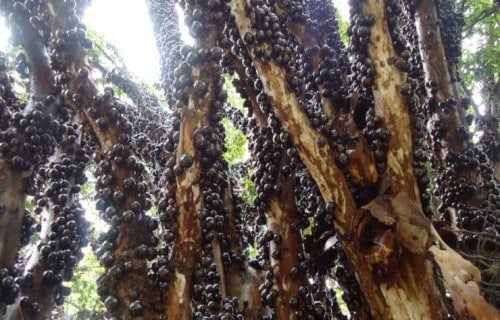
CCL: http://bit.ly/2QZT99x
Jabuticaba Physical Description
The mesmerizing Jabuticaba remains a fairly slow-growing variety of tree. Yet it sometimes attains a height of as much as 147 ft (45 m) if not pruned by man. In addition to how its fruit appears, it also displays yet another fascinating trait.
Its leaves actually display a pinkish-orange color during the youth of the tree. However, as the tree ages, these change to dark green in color. The white flowers, which develop straight from the trunk and limbs, appear in enormous numbers.
In the wild, these incredible works of nature most commonly produce fruit once or twice by year. In cultivation, though, the species often produces fruit year-round in tropical climates. It ranks as one of the few fruit trees able to make such a claim.
The fruit of the Jabuticaba itself remains also remains somewhat impressive. This develops as a relatively large berry that typically reaches about 1.6 in (4 cm) in diameter. The outer skin appears a dark purple, resembling a large grape.
- Kingdom: Plantae
- Phylum: Angiosperms
- Class: Eudicots
- Order: Myrtales
- Family: Myrtaceae
- Genus: Plinia
- Species: P. cauliflora
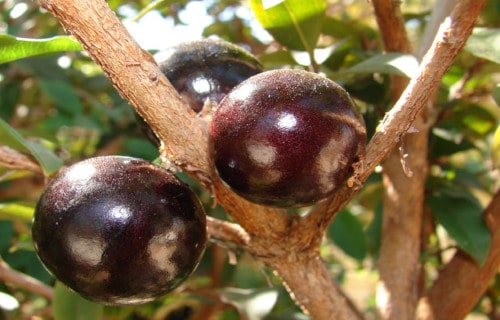
CCL: http://bit.ly/2QZT99x
Jabuticaba Distribution, Habitat, and Ecology
Quite unfortunately, the amazing Jabuticaba has one factor that works against its survival. The plant only inhabits a very limited portion of the globe. That holds true due to the fact that it only grows in a small portion of the continent of South America.
Even more precisely, though, this range has even more constraints upon it. This is true because of the fact that this extremely restricted zone of habitation only entails a total of a small part of Brazil. In fact, that’s just 3 states in the country.
In the wild, this tree has a very precise requirement for its choice of habitat. This occurs because the marvel of Nature appears most commonly in moderately thick forests. It has nonetheless proven itself to be adaptable to other habitats as well, however.
Added to this, the Jabuticaba also grows equally well at altitudes of as low as sea level and as high as 3,00 ft (914 m). While all related species evolved as subtropical and can tolerate mild, brief frosts, some species may be marginally more cold-tolerant.
The amazing Jabuticaba has also been transplanted to other regions of the world. These regions consist of those with reasonably similar environments, including the United States, in North America. The different climate unfortunately restricts its growth somewhat.
Peach Palm
Peach Palm Facts
- The next amazing species chosen to appear in this article about 5 Incredible South American Trees is the wonderful Peach Palm.
- Most notably, the term serves as the generally accepted English common name for a remarkable plant. This marvelous work of Nature also goes by the somewhat distinctive, and hard to pronounce, scientific name of the Bactris gasipaes.
- Regardless of which name someone uses to refer to it, however, the plant remains a fascinating variety of flora. This plant species also has many important uses. For one thing, it currently serves as a vital food source for many animal species.
- The Peach Palm is further used by humans for a wide variety of economic purposes. In addition to its extensive wild population, humans also often cultivate it. The fruits it produces are edible, and nutritious for humans and other creatures alike.
- Quite thankfully, this amazing tree appears to be maintaining a relatively sizable, and stable, population base. This most fortunate situation further appears to be holding true throughout the entirety of its native range.
- The IUCN therefore currently has no listing for it on the Red List of Threatened Species. The wonder of Nature nevertheless must be considered at risk from various factors. Finally, these mainly include habitat loss and climate change.
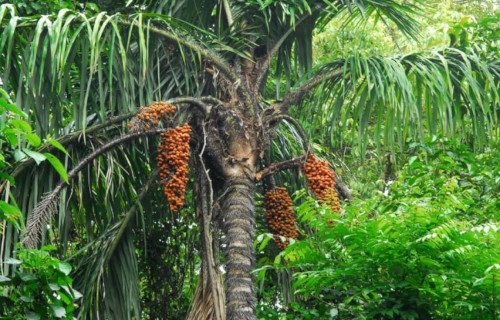
CCL: http://bit.ly/2xQPH8p
Peach Palm Physical Description
The Peach Palm develops in a shape that bears a strong resemblance to related species. That’s due to the fact that this flora forms a large, but slim, vertically growing species of palm. Like most trees of its kind, it also typically, produces a single trunk.
On rare occasions, however, the amazing tree produces multiple trunks. In addition to this, these feature actually develop as quite small, in relation to the height of the tree. In point of fact, the trunk or trunks only average about 8 in (20 cm) in overall thickness.
These also develop covered with comparatively stiff, black spines growing in rows. Further, individual specimens of this flora attain heights of as much as 66 ft (20 m). The leaves of this marvelous variety of Angiosperm typically attain great lengths.
That’s due to the incredible fact that this foliage averages roughly 9.8 ft (3 m) in length. More impressively, the fruit of the Peach Palm grows as either yellow, orange or red when ripe, depending on the variety. These it also produces in large clusters.
- Kingdom: Plantae
- Phylum: Angiosperms
- Class: Monocots
- Order: Arecales
- Family: Arecaceae
- Genus: Bactris
- Species: B. gasipaes
Peach Palm Distribution, Habitat, and Ecology
The Peach Palm evolved as native to a broad swathe of the world. It grows naturally in small areas of the globe. Precisely, this zone of habitation consists of the tropical forest of portions of Central and South America. It’s also populous in the Amazon Rainforest.
This work of Nature also has specific needs for its habitat. The species thrives in areas of excellent drainage, with plenty of rainfall. Though the tree prefers lower altitudes, it also appears at altitudes of as much as 5,905 ft (1,800 m) in the Cauca region of Colombia.
To the best of the knowledge of researchers, pollination seems to be accomplished via a wide variety of insects. Further, local beetle species appear to serve as the primary pollinators of the Peach Palm. This fact alone sets it apart from related species.
Seeds also achieve dispersal through the actions of a variety of mammals, with birds comprising the great majority of these. Even the leaves of this tree have their uses. For human consumption, however, the fruits of the tree must be cooked for several hours.
Mankind also harvests this incredible natural resource for what remains known as its heart of palm. But, many people in its natural range still appreciate it for its usefulness as a valuable source of timber. For many reasons, it’s a vital local resource.
Chilean Firebush
Chilean Firebush Facts
- The fifth and final of our choices for inclusion in this compilation of 5 Incredible South American Trees is the astonishing Chilean Firebush.
- The highly fascinating tree possesses a rather remarkable and unique attribute that sets it apart from virtually all other known plants. That holds true due to a naturally evolved capability that other types of flora do not have.
- This unusual genus has the ability to access various nutrients in the soil that normally remain inaccessible to plants. This also appears to be especially true of the mineral phosphorus, and to various others to slightly lesser degrees.
- The members of this incredible genus further accomplish this through an extraordinarily unique adaptation of the root system. While in the seedling stage, it generates an extremely dense type of root mass known as cluster roots.
- These distinctive formations have the capability of releasing various acidic substances into the soil. These substances then work to transform normally unusable elements into forms that the plant subsequently uses for nourishment.
- This also has the fortunate side effect of providing extra nutrients to other plants via falling leaves. For this reason, the remarkable Chilean Firebush also ranks a keystone species within its habitat. This makes its survival of great importance.
Chilean Firebush Physical Description
The seemingly aptly-named Chilean Firebush has a truly amazing ability. To be more precise, it evolved the ability to appear as either a tree or an extremely large shrub. However, the way in which it develops depends on environmental factors.
The remarkable tree often attains heights of as much as 50 ft (15 m). Most specimens rarely reach that height, though. Plus, an average trunk diameter measures roughly 20 in (50 cm), and the bark predominantly has a dark gray hue, with lighter spots.
Amazingly, the wood of the remarkably impressive Chilean Firebush actually evolved to present a light pink in color. This characteristic quite easily sets it apart from related species. This part of the distinctive plant also remains quite soft, but very durable.
Not to be outdone, the blooms also typically appear in large clusters. And when they do, these most commonly display a deep red color. The plant also appears to be predominantly pollinated by a combination of insects and hummingbirds.
- Kingdom: Plantae
- Phylum: Angiosperms
- Class: Eudicots
- Order: Proteales
- Family: Proteaceae
- Genus: Embothrium
Chilean Firebush Distribution, Habitat, and Ecology
The Chilean Firebush is a small but remarkable species of evergreen tree. It also evolved as endemic to the temperate forests of Argentina and Chile, in South America. The various members of the genus appear in scattered populations as far south as Tierra del Fuego.
Within its endemic habitat range, this genus of plants inhabits a variety of habitats. It appears from sea level to altitudes of up to 6,562 ft (2,000 m). While it prefers regions with a high moisture level, it has proven itself to be rather adaptable to moderately dry climates.
In cultivation the amazing Chilean Firebush most commonly appears as an ornamental plant. But, it also serves as a source of timber in some places. Unlike the majority of flowering trees, it achieves pollination via the actions of various types of birds.

CCL: https://bit.ly/2TUejJB
We truly hope that you have greatly enjoyed this article about 5 Incredible South American Trees. We certainly enjoyed compiling it for you. These marvels of Nature fill the world with beauty and wonder, and aid all life on the planet, in many ways.
But, many of these marvelous species now find themselves in great peril, due to various factors, such as habitat loss and, of course, climate change. It’s up to each of us to do all that we can to protect and preserve these wonders, for our posterity.
Check out our other articles on Earth’s Many Magnificent Bees, 4 Geological Wonders of Antarctica, Sensational Christmas Namesakes of the World, 8 Truly Monumental Orchids
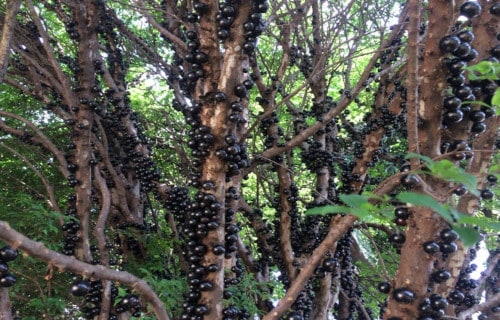
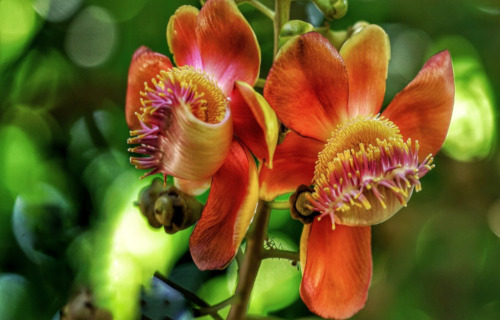
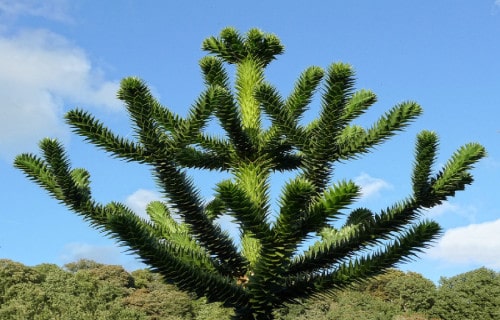
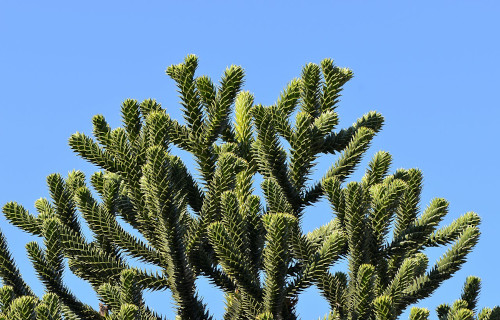


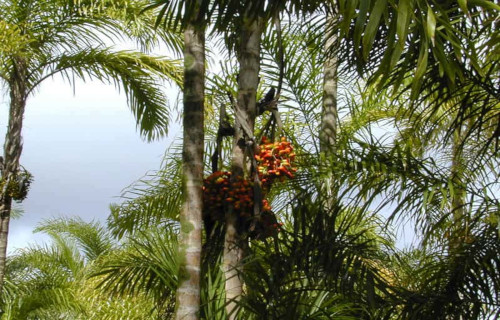
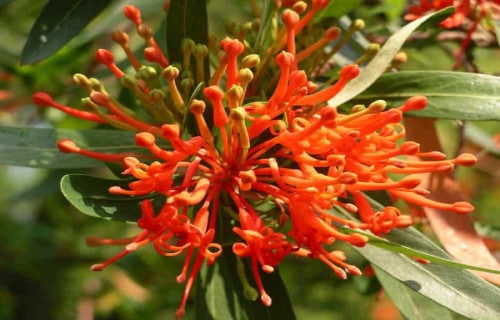
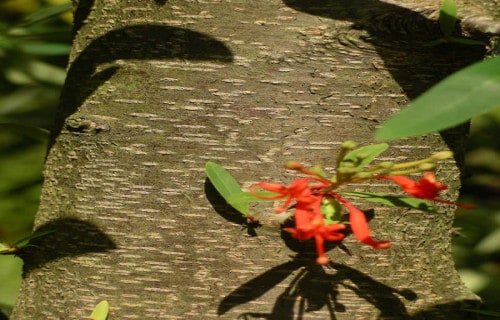
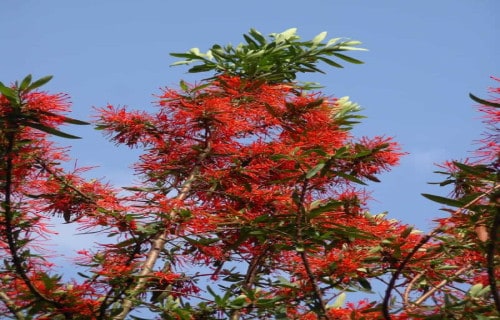









very good
Hello,
Thank you very much!
Sincerely,
OBP